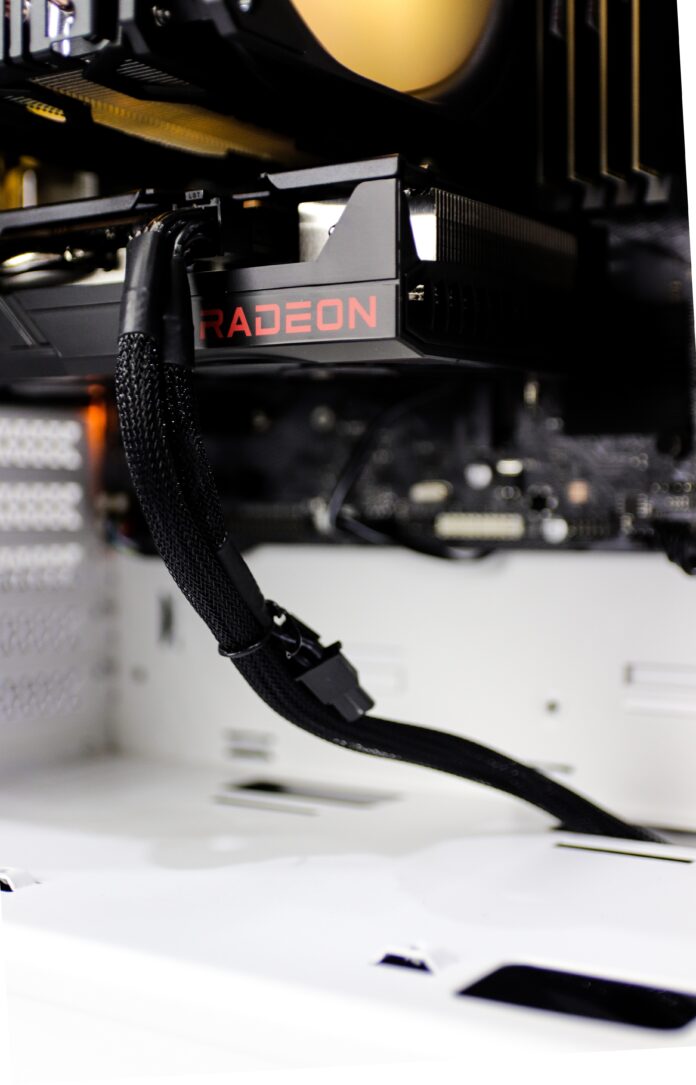Radeon is a brand of graphics processing units (GPUs) developed and manufactured by Advanced Micro Devices (AMD), a prominent player in the semiconductor industry. Radeon GPUs are widely recognized and acclaimed for their exceptional performance, advanced features, and robust support for gaming and multimedia applications. With a rich history spanning several decades, Radeon has continuously evolved to deliver cutting-edge graphics technologies and redefine the gaming experience for millions of users worldwide.
The Radeon brand was first introduced by ATI Technologies, a Canadian company that specialized in developing graphics and multimedia technologies. ATI Technologies released the first Radeon GPU in 2000, marking a significant milestone in the world of computer graphics. This initial Radeon GPU, the Radeon DDR, showcased the company’s commitment to delivering high-performance graphics solutions for both gaming enthusiasts and professional users. The Radeon DDR was a notable success and set the stage for future advancements in the Radeon lineup.
Over the years, Radeon GPUs have established themselves as formidable contenders in the graphics card market, competing directly with Nvidia’s GeForce GPUs. Radeon GPUs have gained popularity among gamers, content creators, and professionals due to their strong performance, efficient power consumption, and competitive pricing. Radeon graphics cards offer a wide range of options to cater to diverse user needs, from entry-level solutions to high-end graphics powerhouses.
One of the defining characteristics of Radeon GPUs is their architecture. Radeon GPUs are built using AMD’s Graphics Core Next (GCN) architecture, which has evolved and improved with each subsequent generation. The GCN architecture delivers excellent compute performance and supports advanced features such as DirectX, Vulkan, and OpenCL, making Radeon GPUs suitable for gaming, content creation, and other demanding workloads.
Radeon GPUs also incorporate various proprietary technologies that enhance their capabilities. One such technology is Radeon Image Sharpening (RIS), which uses intelligent algorithms to enhance image quality by sharpening in-game visuals without significantly impacting performance. Another notable technology is Radeon Anti-Lag, which reduces input lag in games, resulting in a more responsive and immersive gaming experience. These technologies, along with others like Radeon Boost and Radeon Chill, contribute to Radeon’s reputation for providing exceptional visuals and smooth gameplay.
In recent years, Radeon GPUs have seen significant advancements with the introduction of new architectures. The RDNA (Radeon DNA) architecture, introduced in 2019, brought substantial improvements in performance per watt and introduced support for real-time ray tracing and variable rate shading. The RDNA architecture powers a range of Radeon GPUs, including the Radeon RX 5000 series and the high-performance Radeon RX 6000 series.
The Radeon RX 6000 series, based on the RDNA 2 architecture, has garnered particular attention for its impressive performance and feature set. These GPUs feature hardware-accelerated ray tracing, delivering realistic lighting and reflections in games that support the technology. The Radeon RX 6000 series also boasts support for AMD’s Smart Access Memory (SAM) technology, which enables improved performance by allowing the GPU to access the CPU’s entire memory pool. Furthermore, these GPUs offer a significant leap in raw compute power, making them highly desirable for gamers and content creators alike.
AMD continues to push the boundaries with its Radeon GPUs, and its latest offering, the Radeon RX 7000 series, is highly anticipated. Expected to leverage an even more advanced architecture, the Radeon RX 7000 series aims to deliver unprecedented performance and visual fidelity, further cementing Radeon’s position as a leader in the GPU market.
Aside from the consumer graphics card market, Radeon GPUs also find applications in other domains. Radeon Instinct GPUs, for instance, are designed specifically for data center and high-performance computing environments. These GPUs excel at accelerating scientific research, machine learning, and artificial intelligence workloads, enabling researchers and organizations to tackle complex problems more efficiently.
One of the key technologies that Radeon GPUs offer is AMD FreeSync. FreeSync is an adaptive sync technology that synchronizes the refresh rate of the display with the GPU’s output, eliminating screen tearing and minimizing input lag. This results in a smoother and more responsive gaming experience, enhancing gameplay and providing a competitive edge to gamers.
Radeon GPUs also excel in supporting high-resolution displays and multi-monitor setups. Whether it’s gaming on a 4K monitor or creating content on multiple screens, Radeon GPUs can handle the demanding requirements with ease. With features like DisplayPort 1.4 and HDMI 2.1 support, Radeon GPUs can drive high-resolution displays at high refresh rates, enabling gamers and professionals to enjoy stunning visuals and enhanced productivity.
Moreover, Radeon GPUs have been at the forefront of introducing real-time ray tracing to the gaming market. Ray tracing is a rendering technique that simulates the behavior of light, resulting in more realistic and immersive graphics. With the introduction of the RDNA 2 architecture, Radeon GPUs now feature dedicated hardware for real-time ray tracing, bringing lifelike lighting, reflections, and shadows to games that support the technology. This enhances the visual fidelity and creates a more immersive gaming experience.
Radeon GPUs are not limited to gaming; they also excel in content creation applications. From video editing and 3D rendering to digital art and animation, Radeon GPUs offer the computational power and advanced features needed to handle demanding workloads. The high compute performance of Radeon GPUs, coupled with support for APIs like OpenCL and Vulkan, enables faster rendering times and smoother workflow experiences for professionals in various creative industries.
AMD has also made significant strides in supporting the rapidly growing field of machine learning and artificial intelligence (AI). With the ROCm (Radeon Open Compute) software platform and Radeon Instinct GPUs, AMD provides powerful solutions for training and inference tasks in AI applications. The parallel processing capabilities of Radeon GPUs, coupled with optimized software frameworks like TensorFlow and PyTorch, enable researchers and data scientists to accelerate their AI workloads and drive innovation in the field.
Furthermore, AMD has been actively involved in the development and promotion of open standards and technologies. Radeon GPUs fully support Vulkan, an open and cross-platform API that provides low-level access to the GPU, allowing developers to extract maximum performance and efficiency from Radeon hardware. AMD is also a founding member of the Khronos Group, the consortium responsible for developing and maintaining Vulkan. This commitment to open standards ensures that Radeon GPUs are well-supported across a wide range of software and platforms.
In addition to their technical capabilities, Radeon GPUs have garnered a loyal community of users and enthusiasts. The Radeon Software suite, which includes the Radeon Adrenalin Edition drivers, provides a comprehensive set of tools and features for customizing and optimizing the graphics experience. Users can fine-tune settings, monitor performance, capture gameplay footage, and stream their gameplay seamlessly with the Radeon Software. AMD’s active engagement with the community through regular driver updates, bug fixes, and feature enhancements further reinforces the brand’s commitment to delivering a top-tier experience for Radeon users.
Looking ahead, the future of Radeon looks promising. With ongoing research and development, AMD continues to push the boundaries of graphics technology, aiming to provide even more powerful and efficient GPUs. The integration of AMD’s CPU and GPU technologies through initiatives like AMD Infinity Fabric also holds the potential to deliver unprecedented performance and efficiency gains. As the demand for high-quality visuals and immersive experiences grows, Radeon is well-positioned to meet the needs of gamers, content creators, and professionals alike.
In conclusion, Radeon GPUs have established themselves as a leading brand in the graphics card market, offering exceptional performance, advanced features, and competitive pricing. With a strong focus on gaming, content creation, and emerging technologies such as AI, Radeon continues to innovate and deliver cutting-edge solutions. As the graphics landscape evolves, Radeon’s commitment to pushing the boundaries of graphics technology ensures that it will remain a prominent player in the industry, delivering immersive and visually stunning experiences to users worldwide.






















